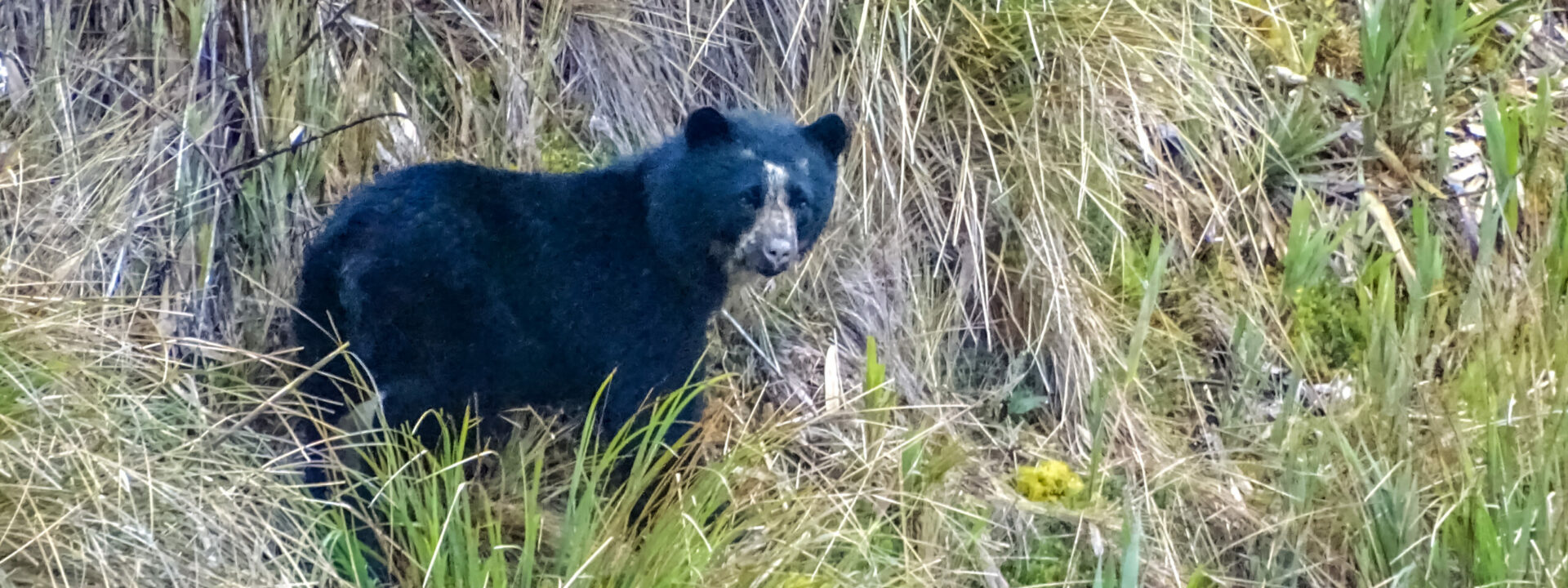Ecuador
Mammals and Birds
A 15-day trip looking for some of Ecuador's tricky mammals plus a great selection of birds
This new tour focusses on looking for some of the iconic mammals of Ecuador and over two weeks we plan to explore the rainforests of lowland Amazonia, the high paramo grasslands and the cloud forests on both the eastern and western slopes of the mighty Andes mountain-range.
Combining these very different habitats means we have an opportunity to look for an incredible range of mammals and birds, including four species we are particularly keen to see: Spectacled Bear, Mountain Tapir, Olinguito (or Andean Olingo) and the enigmatic and rarely seen Western Mountain Coati.
Our holiday starts with an overnight stay in Quito, before we fly eastwards over the Andes to the Amazon lowlands for a four-night stay at the appropriately named Bamboo Lodge. Here, we hope to find Giant Otter, Amazon River Dolphin and an excellent range of primates which could include two relatively localised species, Lucifer Titi and Black-mantled Tamarin.
We then head up the eastern slope of the Andes for a two-night stay at San Isidro where the possibilities include Black Agouti, Andean White-eared Opossum and Spix’s Night Monkey.
Continuing further up the eastern slope, our next destination is Guango Lodge where we have two full days to explore the paramo and high forests of the Cayambe-Coca National Park looking for Spectacled Bear and Mountain Tapir.
Our holiday then concludes with stays at two very comfortable lodges on the western slope of the Andes, Mashpi Lodge and Bellavista Lodge. Once again, there are some special mammals to look for with Western Mountain Coati and Olinguito being our principal targets, however, we also hope to find Kinkajou, Tayra and a range of other species.
Ecuador is, of course, also rightly famous for the extraordinary range of birds with a national list of 1,600 species in a country which is only 16% larger than the UK. Whilst the focus of our holiday is mammals, it will be impossible to ignore the birds and those we hope to see include iconic species such as Andean Cock-of-the-Rock, Blue-and-Yellow Macaw and Plate-billed Mountain Toucan, as well as a host of colourful tanagers and hummingbirds.
With several days exploring the cloud forests on the western slope of the Andes, we could also see a number of Choco endemics (birds only found in NW Ecuador and SW Colombia) with the possibilities including Choco Toucan, Toucan Barbet and Moss-coloured Tanager.
Tour Highlights
- A 15-day mammal-focussed trip looking for some of the iconic species in Ecuador
- Four nights in the Amazonian lowlands looking for Giant Otter, Amazon River Dolphin and primates including the relatively localised Lucifer Titi and Black-mantled Tamarin
- Two nights at San Isidro Lodge where the possibilities include Black Agouti, Andean White-eared Opossum and Spix's Night Monkey
- Two days in the Cayambe-Coca National Park looking for Spectacled Bear and Mountain Tapir Explore the cloud forests of the western slope of the Andes for Olinguito and range-restricted Western Mountain Coati
- Explore the cloud forests of the western slope of the Andes for Olinguito and range-restricted Western Mountain Coati
- Enjoy a spectacular range of Ecuadorian birds from lowland species such as Hoatzin, Blue-and-Yellow Macaw and Paradise Tanager to iconic cloud forest specialities including Andean Cock-of-the-Rock, Plate-billed Mountain Toucan and a selection of Choco endemics which are only found in NW Ecuador and SW Colombia
- Chances for over 30 species of hummingbirds as well as colourful tanagers, toucans and parrots
Outline Itinerary
-
Depart UK for Quito (1 night)
-
Fly Quito to Amazonian lowlands and transfer to Bamboo Lodge (4 nights)
-
Bamboo Lodge
-
Transfer to San Isidro (2 nights)
-
San Isidro
-
Transfer to Guango Lodge (3 nights)
-
Cayambe-Coca National Park
-
Papallacta Pass and then on to Mashpi Lodge (1 night)
-
Amagusa Reserve and then on to Bellavista Lodge (2 nights)
-
Bellavista Lodge and environs
-
Morning exploring Tandayapa Valley and then to Quito Airport. Depart Ecuador
-
Arrive UK
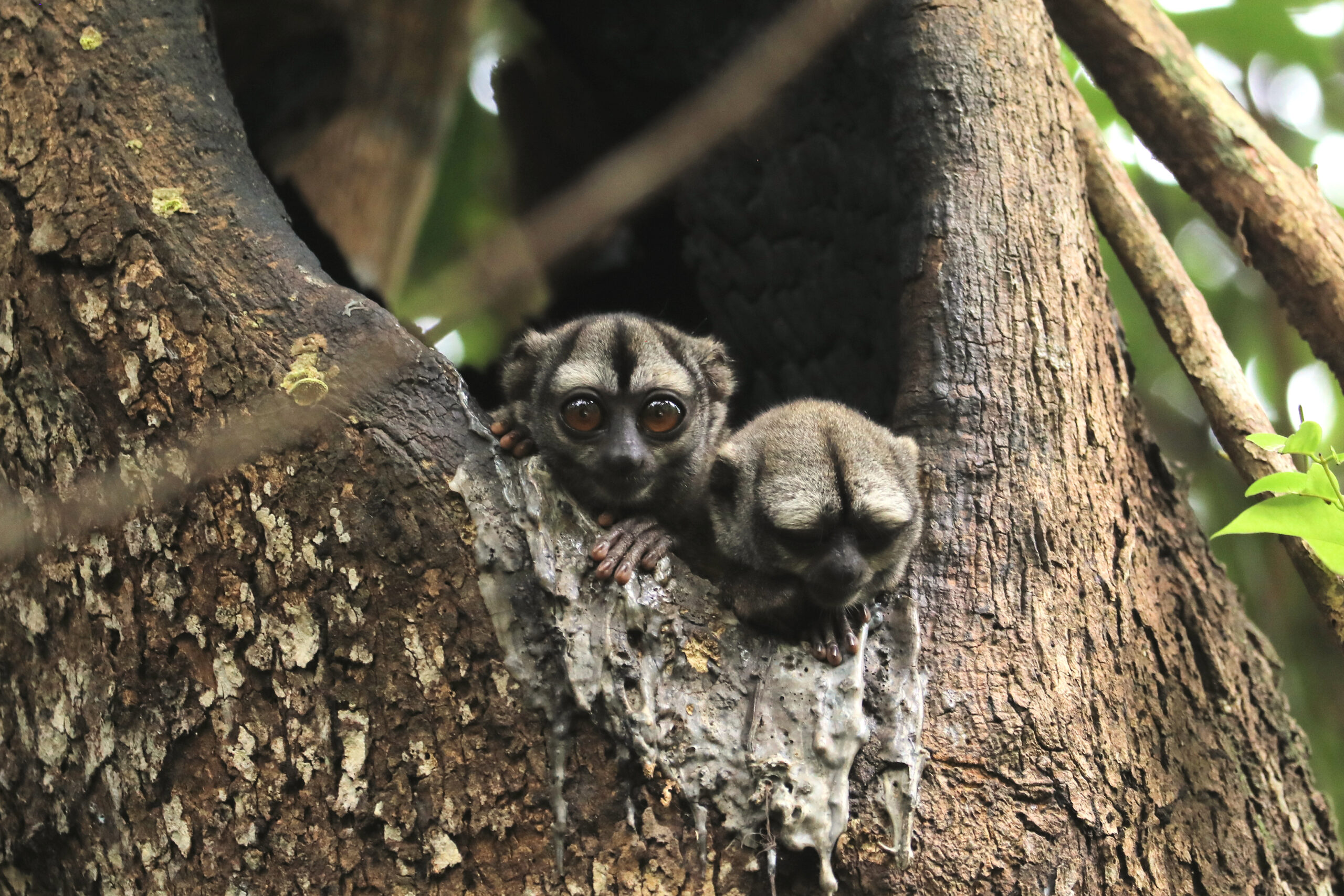
Primarily focussing on iconic mammals, this new two-week tour explores the rainforests of lowland Amazonia, the high paramo grasslands and the cloud forests on both the eastern and western slopes of the mighty Andes mountain range. Combining these very different habitats means we have an opportunity to look for an incredible range of mammals and birds, however, there are four species we are particularly keen to see: Spectacled Bear, Mountain Tapir, Olinguito and the enigmatic Western Mountain Coati.
Our holiday starts with an overnight stay in Quito before we fly eastwards over the Andes to the Amazon lowlands. Here, we will enjoy a spectacular two-hour ride by motorised canoe passing mile after mile of pristine rainforest on our way to the appropriately named Bamboo Lodge where we stay for four nights.
The lodge is a perfect location to look for some of the mammals of NE Ecuador and the rich forests are home to a range of species including two relatively localised primates, Lucifer Titi and Black-mantled Tamarin. We also hope to find Giant Otter, Amazon River Dolphin as well as other monkeys which could include Common Woolly Monkey, Ecuadorian Squirrel Monkey, Western Pygmy Marmoset, Colombian Red Howler and Marañón White-fronted Capuchin.
Whilst our holiday’s main emphasis is mammals, nevertheless, we hope to plenty of birds as an impressive range of lowland Amazon species can also be found here including Hoatzin, Many-banded Aracari, Cream-coloured Woodpecker, Blue-and-Yellow Macaw, Golden-headed Manakin, Bare-necked Fruitcrow and Paradise Tanager.
We will also go out after dark on several evenings during our stay and this gives a very different perspective on the forest and the chance to see some completely new species with Spix’s Night Monkey, Tawny-bellied Screech Owl, Spectacled Owl and Great Potoo amongst the possibilities.
Leaving the lowlands, our next destination will be San Isidro Lodge which sits at an elevation of 2,000m on the eastern side of the Andes. The wildlife will be very different to the lowlands with a completely new suite of mammals and birds to look for. High on our target list will be Black Agouti, as San Isidro is considered a reasonably reliable site for this species and this will also be our first opportunity for Mountain Tapir as the local animals are known to sometimes come in to lick salt.
There are also some interesting taxonomic conundrums we will hope to see whilst staying at San Isidro as the local populations of night monkeys and squirrel monkeys live at much higher elevations than their Amazonian counterparts and it has been suggested that both should be treated as different species.
There is also a mystery owl, the ‘San Isidro Owl’, which is seen on a reasonably regular basis around the lodge which seems to be intermediate between Black-and-white Owl and Black-banded Owl and we hope to find this along with many of the birds of the area which could include spectacularly colourful species such as White-capped, Flame-faced and Saffron-crowned Tanagers, Crested Quetzal and Chestnut-breasted Chlorophonia. There is also a lek of the orange eastern race of Andean Cock-of-the-Rock only a 20-30 minute walk from the cabins so we are likely to visit this during our stay.
Continuing our climb up the eastern slope of the Andes, our next destination is the delightful Guango Lodge which is situated at an elevation of 2,700m (c.8,900 feet) and stands in forest near the rushing Papallacta River. The lodge’s beautiful garden invariably contains many flowers and feeders that are highly attractive to hummingbirds and up to a dozen different species can be seen in single day including the aptly-named Sword-billed Hummingbird as well as other possibilities such as Glowing and Golden-breasted Pufflegs, Mountain Velvetbreast and Tourmaline Sunangel.
Our main reason for coming here, however, is to look for two very special mammals, the Spectacled Bear and Mountain Tapir, and we have two full days scheduled to explore the Cayambe-Coca National Park to look for these species. We will have 4×4 vehicles available and will use some local guides who are familiar with both species to assist us.
Skirting around Quito, our tour will conclude with stays at two very comfortable lodges on the western slope of the Andes, Mashpi Lodge and Bellavista Lodge. Once again, our goal is to find some special mammals with our primary target being Olinguito, the smallest member of the racoon family which was only described in 2013. Now known to occur along the Andes from Western Colombia into Ecuador, the cloud forests around Bellavista are considered one of the best places to find this species and we have two nights at Bellavista to look for it.
We also hope to see the range-restricted Western Mountain Coati on a visit to the Amagusa Reserve with other mammal possibilities including Kinkajou, Andean White-eared Opossum and Tayra.
During our days exploring the cloud forests on the western slope of the Andes, we should also see a number of Choco endemics (birds only found in NW Ecuador and SW Colombia) with the possibilities including Choco Toucan, Toucan Barbet and Moss-coloured Tanager as well as a spectacular range of hummingbirds and tanagers.
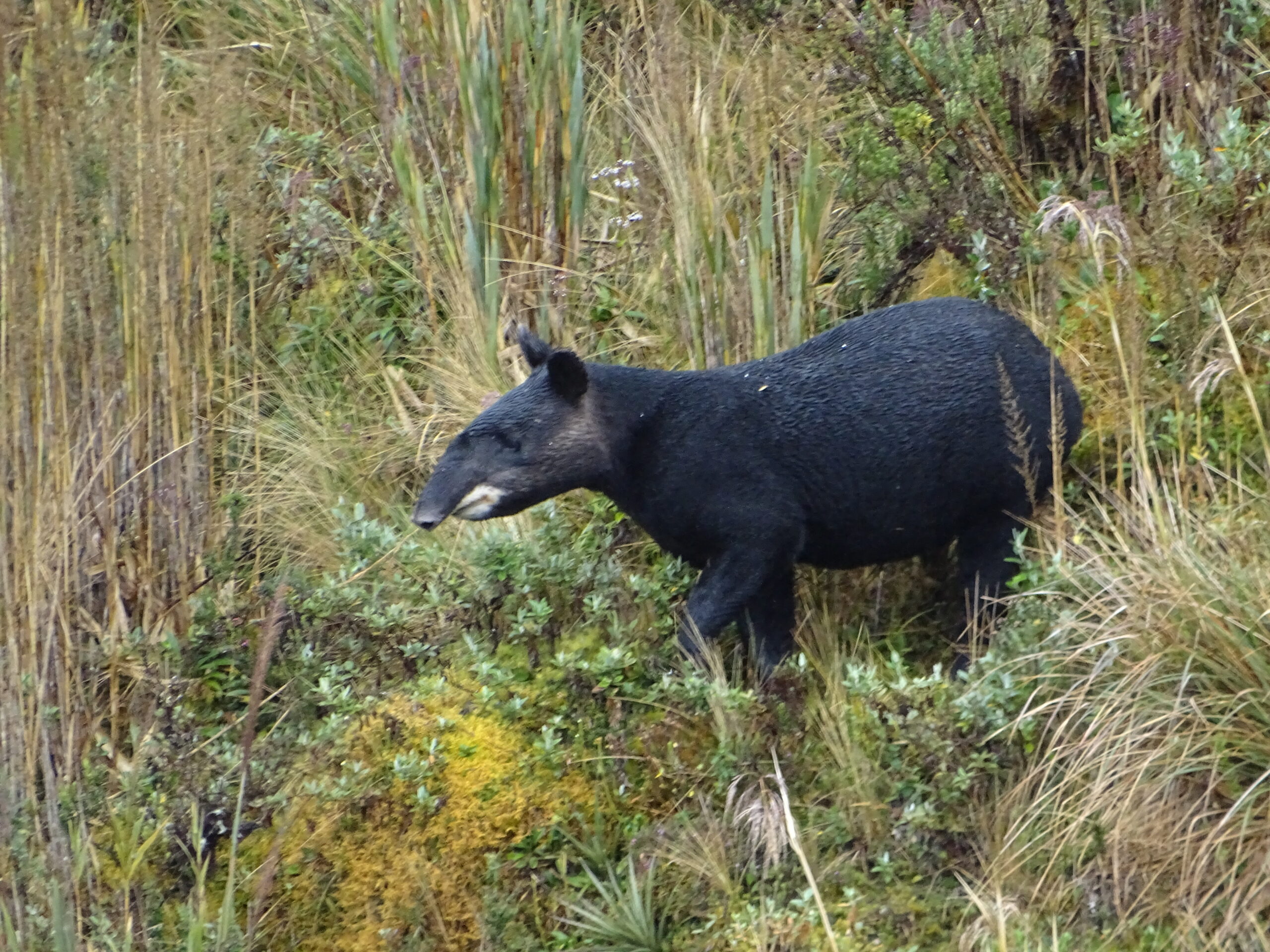
Day 1 ARRIVAL IN QUITO
We take a scheduled flight from London to Quito, arriving in the evening. Having met up with our local guide, we will transfer directly to a nearby hotel. Night in Quito
Day 2 FLIGHT TO COCA AND TRANSFER TO BAMBOO LODGE
We plan to take a morning flight from Quito to the Amazonian lowlands and after a road transfer, we will take a two-hour motorised canoe ride to our base for the next four nights, the delightful Bamboo Lodge. The lodge is located in the Cuyabeno Wildlife Reserve and the river trip should be a fantastic introduction to the area as we pass mile after mile of pristine rainforest.
We can expect to find our first wildlife of the holiday as we cruise along the river with a selection of herons, kingfishers, parrots and birds of prey amongst the more likely species. We may also see our first Amazon River Dolphins.
After lunch at the lodge, we will begin our exploration of the area assisted by expert local guides. Night Bamboo Lodge
Days 3-5 BAMBOO LODGE
We have three full days to explore the habitats around Bamboo Lodge and this is likely to be through a combination of canoe rides and walking the lodge’s trail network depending on the species we are looking for. We will start early each morning and then return to the lodge during the heat of the day with this then followed by further exploration in the afternoon and after dark on some nights.
There are a number of primates that occur in the forests around the lodge with the two of our targets being relatively localised species, Lucifer Titi and Black-mantled Tamarin. Other possibilities here include Common Woolly Monkey, Ecuadorian Squirrel Monkey, Colombian Red Howler and Marañón White-fronted Capuchin. Western Pygmy Marmoset and Spix’s Night Monkey are both also present and if our local guides are aware of areas where these tricky species can be found, we will certainly try for them both.
As well as the resident Amazon River Dolphins, we will also hope to see Giant Otters as there is at least one family party not too far from the lodge and other mammal possibilities include Linnaeus’s Two-toed Sloth and Southern Tamandua.
Whilst locating mammals will be our main priority, it will be impossible to ignore the multitude of birds which occur around Bamboo Lodge as over 350 species have been recorded in the area, although we are only likely to find a modest percentage of these during our visit. Those we could encounter include classic lowland Amazonian species such as Hoatzin, Blue-and-Yellow Macaw and Screaming Piha, although there are many more we could find including Sungrebe, Grey-winged Trumpeter, Amazonian Trogon, Amazonian Motmot, Many-banded Aracari, Cream-coloured Woodpecker, Golden-headed Manakin, Bare-necked Fruitcrow, Paradise Tanager and Blue Dacnis.
During our stay, we will also head out after dinner on some occasions to look for nocturnal wildlife and this will be our best opportunity to hopefully see Spix’s Night Monkey and a range of smaller forest mammals.
The area is also excellent for owls, potoos and other nocturnal species and we will hope to see Tawny-bellied Screech Owl, Spectacled Owl and Great Potoo. If we are extremely fortunate, we could see some of the tricky nocturnal birds that occur here as both Nocturnal Curassow and Rufous Potoo have been recorded nearby, although we would be very lucky to encounter either. Three further nights at Bamboo Lodge
Day 6 BAMBOO LODGE TO SAN ISIDRO
We will reluctantly leave Bamboo Lodge after breakfast and after the canoe to back to ‘civilisation’, we will transfer by private bus to our next destination, Cabañas San Isidro.
San Isidro’s cluster of cosy cabins nestle within young secondary forest and we have two evenings and one full day to explore the lodge’s network of trails and the surrounding area. We should arrive by early to mid-afternoon (depending on how many stops we make on the journey from Bamboo Lodge) and our first new birds could include several species of hummingbirds around the lodge’s feeders with the possibilities including Fawn-breasted Brilliant, Long-tailed Sylph, Bronzy Inca and Tawny-bellied Hermit.
Situated at an elevation of 2,000m, the wildlife will be very different to what we encountered in the Ecuadorian lowlands and we will begin our explorations during the afternoon and then head out again after dark.
One of the species we will hope to find is a family troupe of night monkeys which are known to live not far from the cabins. Although officially these are Spix’s Night Monkeys, this is generally considered to be a lowland species and given the elevation, it is thought that the monkeys at San Isidro may actually be an undescribed species.
Another nocturnal possibility is Andean White-eared Opossum which again can sometime be found not far from the accommodation.
There is also a mystery owl which is seen on a reasonably regular basis around the lodge which seems to be intermediate between Black-and-white Owl and Black-banded Owl. What makes the situation even more intriguing, however, is that the former is only known from the western slope of the Andes at elevations below c.1,300m and Black-banded Owl is believed to only occur up to 900m on the eastern slope. Night San Isidro Lodge
Day 7 SAN ISIDRO
We have a full day to explore the lush cloud-forests at San Isidro and will begin at first light or possibly even earlier!!
There are number of mammals to look for with the most numerous species generally being Red-tailed Squirrel, however, we will also hope to find Black Agouti, as San Isidro is considered a reasonably reliable site for this species and there are also chances for Mountain Tapir as the animals are known to sometimes come in to lick salt.
Squirrel Monkeys can sometimes also be found not far from the lodge and like the aforementioned night monkeys, there are some questions over the taxonomic status of these diurnal primates as they too are living at a much higher altitude than other populations of this species.
Camera traps have demonstrated that an excellent range of other mammals live in the forests around the lodge including Ocelot, Northern Oncilla, Puma and Jaguarundi, however, we will be extremely to see any cats during our stay. Spectacled Bears are also known to occur in the area and if we receive any news on where any are feeding, we will certainly follow up on this.
The San Isidro region also boasts an impressive bird list, as over three hundred species have been recorded within a matter of kilometres of the lodge. As we explore the quiet roads and trails around San Isidro, we will hope to find some mixed feeding flocks. These can contain a couple of dozen species with the possibilities including spectacularly colourful birds such as White-capped, Flame-faced and Saffron-crowned Tanagers.
Other special birds which can be found in the area include Andean Cock-of-the-Rock (of the orange eastern race) as there is a lek of these only a 20-30 minute walk from the cabins. Wattled Guan, Inca Jay and Black-chested Fruiteater are also possible and if we are very fortunate White-faced Nunbird, Crested Quetzal and Black-billed Mountain Toucan are also known from the area.
After nightfall, we will have a further opportunity to look for nocturnal mammals and birds and the latter could include Rufous-banded Owl, Rufescent and White-throated Screech Owls and Swallow-tailed and Band-winged Nightjars. Second night San Isidro Lodge
Day 8 SAN ISIDRO TO GUANGO LODGE
We are likely to have time for some final exploring around San Isidro and new mammals could possibly include Common Woolly Monkey or Dwarf Brocket Deer, although neither is easy to find.
Like a number of places in South America, the staff at San Isidro periodically manage to habituate some antpittas and if any are coming to a feeding station, we will certainly visit this before we reluctantly leave San Isidro.
We will then continue our climb into the Andes with our destination the delightful Guango Lodge. Situated at an elevation of 2,700m (c.8,900 feet), and standing in forest near the rushing Papallacta River, Guango’s beautiful garden contains many flowers and feeders that are highly attractive to hummingbirds and up to a dozen different species can be seen in single day. The lodge is one of the best places to see the aptly named Sword-billed Hummingbird and other possibilities include Chestnut-breasted Coronet, Mountain Velvetbreast, Glowing and Golden-breasted Pufflegs and Tourmaline Sunangel.
Our main reason for coming here, however, is to look for two very special mammals, the Spectacled Bear and Mountain Tapir and we have two full days scheduled to explore the Cayambe-Coca National Park to look for these species. We will have 4×4 vehicles available and will use some local guides who are familiar with both species to assist us. Night Guango Lodge
Days 9-10 CAYAMBE-COCA NATIONAL PARK
We will spend two days in the Cayambe-Coca National Park making use of 4WD vehicles to explore remote areas in our quest for the bear and tapir. It is likely that we will combine driving along bumpy tracks, scanning from viewpoints and some walking, although the latter will always be at a gentle pace given the altitude.
Other mammals we could find include the local race of White-tailed Deer (sometimes treated as a separate species) which has made a comeback here, as well as Andean Fox (or Culpeo) which is occasionally seen as it searches for the ubiquitous Forest Rabbit.
The area around Guango offers an exciting range of habitats from the fast-flowing river to cloud forest and bamboo thickets and as well as looking for mammals, we will also want to find some of the birds of the region with the likes of Torrent Duck, Masked Trogon, Turquoise Jay, White-capped Dipper, Blue-backed and Capped Conebills, Buff-breasted Mountain Tanager and the beautiful Plush-capped Finch amongst the possible species.
With luck, we may even come across the tricky Grey-breasted Mountain Toucan or succeed in tracking down a Chestnut-naped Antpitta which prior to the introduction of antpitta feeding stations was notoriously difficult to see!
We may also go out after dark as there is an area not too far from the lodge where we stand a chance of finding Stump-tailed Porcupine. Two further nights Guango Lodge
Day 11 PAPALLACTA PASS AND ON TO MASHPI LODGE
We will leave Guango Lodge after breakfast and drive to what is quite literally the high point of our tour, the Papallacta Pass, which is one of relatively few paved routes through the Andes in this part of Ecuador.
As we climb up the slope, we may stop to visit a remnant stand of Polylepis forest which is home to Giant Conebill, Black-backed Bush Tanager and Páramo Tapaculo.
The top of the pass is at 4,200m (c.13,500 feet) and, given the altitude, we will look for wildlife at a gentle pace. There are plenty of páramo specialities to look for including Carunculated Caracara, Ecuadorian Hillstar, Stout-billed Cinclodes, Andean Tit-spinetail, Many-striped Canastero, Plain-capped Ground Tyrant and Grass Wren.
As Variable Hawks and Black-chested Buzzard-eagles soar overhead, we might also encounter an Andean Snipe or Tawny Antpitta and if the weather is good, there are also chances of Andean Condor.
After a picnic in the field, we will start our descent of the western slope of the Andes, skirting around Quito on our way to the extremely comfortable Mashpi Lodge. The lodge is located in a private cloud forest reserve and we are likely have time to explore some of the trails after we arrive.
Over 400 species of birds, 35 of which are endemic to the Chocó region of NW Ecuador and SW Colombia, have been recorded here including Velvet-purple Coronet, Choco Toucan, Choco Manakin and Toucan Barbet, however, as usual our main priority will be to locate speciality mammals. Night Mashpi Lodge
Day 12 AMAGUSA RESERVA AND ON TO BELLAVISTA
We will spend the morning exploring the Amagusa Reserve where one of our goals is to find the range-restricted Western Mountain Coati. This species is comparatively poorly known, however, the reserve has recently become a reasonably reliable site for it.
There should also be more Chocó endemics to look for with Moss-backed Tanager, Rufous-throated Tanager and Blue-tailed Trogon amongst the possibilities.
We will then drive to Bellavista Lodge, which is perched spectacularly on a ridge at 2,200m. The lodge is set in a four hundred hectare cloud forest reserve and was the first official Private Protected Area in Ecuador.
Over 400 species of birds, plus some great mammals, have been recorded in the area and for mammal watchers, the most significant species is undoubtedly the Olinguito which was only described in 2013. It is now known that the Olinguito occurs along the Andes from Western Colombia into Ecuador, with the cloud forests around Bellavista considered to be one of the best places to find what is the smallest member of the racoon family.
Resembling the more widespread Kinkajou (although the two species are not particularly closely related), our best chances for seeing Olinguito are after dark and we will make use of local expertise to hopefully located it.
As well as the Olinguito, we will also hope to find Kinkajou with other mammal possibilities including Andean White-eared Opossum and we may also find Rufous-bellied Nighthawk which often flies around the lodge. Night Bellavista Lodge
Day 13 BELLAVISTA AND TANDAYAPA VALLEY
We have a full day to explore the forests around Bellavista and the nearby Tandayapa Valley and we will primarily concentrate on trying to find some of the special mammals of the area, although it will be impossible to ignore the wide range of birds which also occur here.
New mammal possibilities include Tayra, a large member of the weasel family, and there are some private gardens not too far from the lodge where this species is reasonably regular. Both Northern Oncilla and Western Mountain Coati are occasionally seen in the area too, although we would be very fortunate to see either of these.
We will also spend some time enjoying the spectacular range of birds which can be found around Bellavista which could include three colourful birds which are endemic to the Chocó region: Toucan Barbet, Plate-billed Mountain Toucan and Tanager Finch.
We should also find flocks of tanagers moving through the forest with Blue-winged Mountain Tanager, Golden Tanager, Flame-faced Tanager and the appropriately named Grass-green Tanager amongst the possibilities. Other birds we will hope to find include Green-and-black Fruiteater and Crimson-mantled Woodpecker.
We may visit some hummingbird feeders where up to twenty-four species have been seen in a day including Empress Brilliant, Green-crowned Woodnymph, and sometimes even the appropriately named Little Woodstar.
After dark, we will continue our quest for the nocturnal mammals which can be found in the cloud forests around Bellavista. Tube-lipped Tailless Bat is also known to come to some of the lodge’s hummingbird feeders after dark and we will certainly check the feeders as this is one of the few sites in the world where this species can be seen although good photos are often needed to confirm the identification.
There are also chances for some new nocturnal birds and these could include Colombian Screech Owl, as well as both Band-winged and Swallow-tailed Nightjars. Further night Bellavista Lodge
Day 14 BELLAVISTA AND DEPART FOR UK
We will keep our final morning flexible depending on what we have already seen, with one option being to visit a lek of Andean Cock-of-the-Rock. The birds gather each morning to display and the raucous calls can reach fever-pitch if a female arrives.
There should also be time to enjoy the spectacular hummingbird feeders at Bellavista, before we reluctantly leave the cloud forests and head back to Quito for our evening flight back to the UK.
Day 15 Arrive UK.
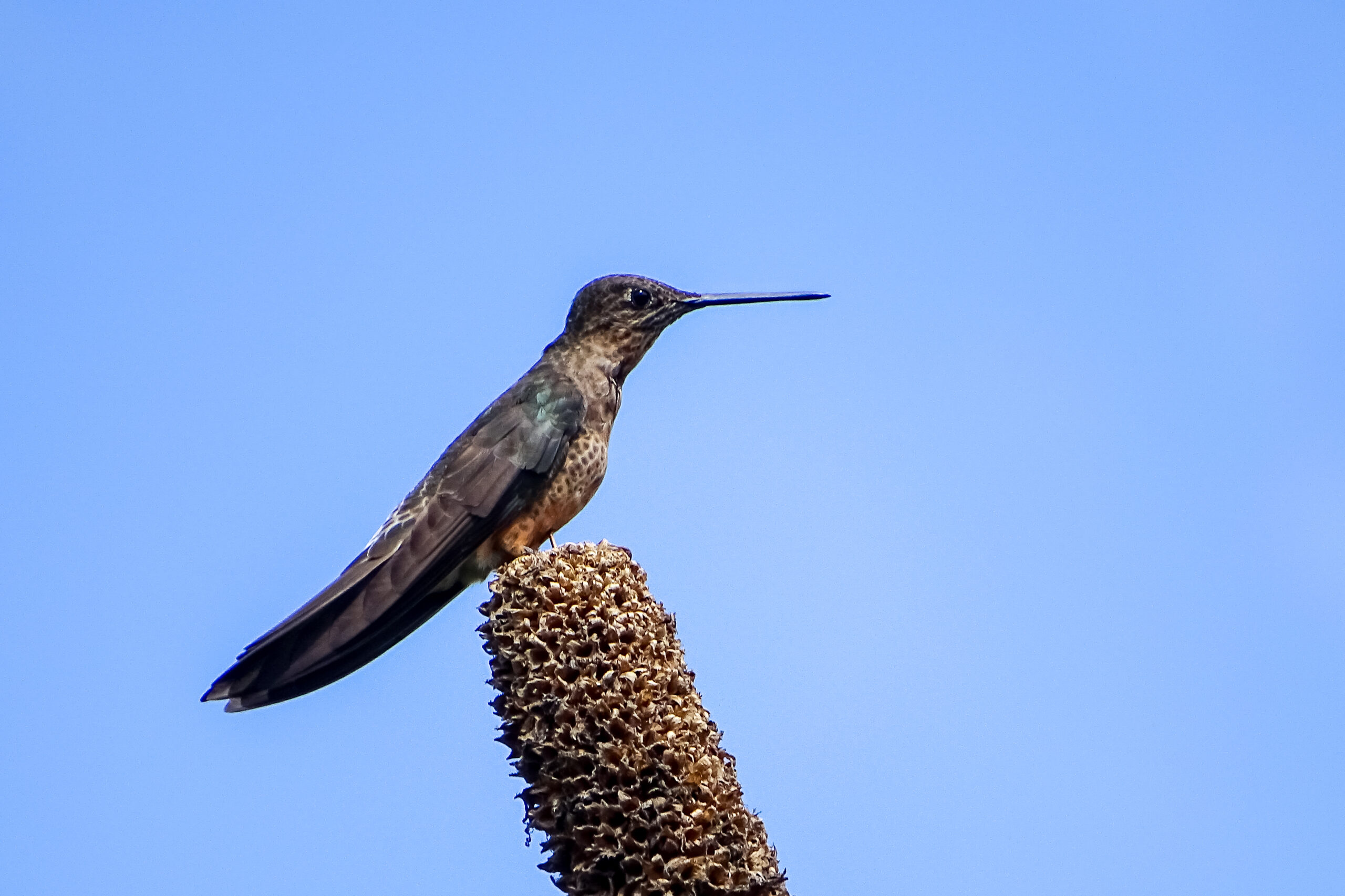
WHAT TO EXPECT
This 15-day tour focusses on some of the key mammals of Ecuador, in particular, Spectacled Bear, Mountain Tapir and the recently described Olinguito. We will also look for a variety of other species including Amazon River Dolphin, Andean Fox, Long-tailed Weasel, White-tailed Deer, Andean White-eared Opossum, Red-tailed Squirrel, Dwarf Squirrel, Giant Otter, Western Mountain Coati, Black Agouti, Kinkajou, Andean Rabbit and potentially 10 or more species of primate.
We also anticipate finding at least 300 species of birds including many of the speciality species of the region including Andean Condor and Andean Cock-of-the-Rock.
With several days on the western slope of the Andes, we can also expect to see a good number of species which are endemic to the Choco region and there are a myriad of localised species we hope to see including Plate-billed Mountain Toucan, Toucan Barbet, and Yellow-collared Chlorophonia. We can also expect to see some spectacular and colourful tanagers including Golden, Moss-backed, Rufous-throated and Glistening-green, some of which have comparatively small world ranges.
Visits to a number of different hummingbird feeders should enable us to find upwards of thirty species of hummingbirds with the possibilities ranging from the appropriately named Giant Hummingbird to the diminutive Little Woodstar. Other species we hope to see include the extraordinary Sword-billed Hummingbird, as well as Mountain Velvetbreast, Golden-breasted Puffleg, Tourmaline Sunangel, Empress Brilliant and Velvet-purple Coronet.
It must be remembered, however, that this is first and foremost a mammal tour and that we will not be spending a lot of time trying to track down ‘little brown jobs’, although we will try to accommodate the wishes of keen birders as far as possible.
The daily routine will vary according to what we are looking for, however, the key times are dawn and dusk and we will also be spending some nights spotlighting after dark. Consequently we will, when we are able to do so, spend the middle of the day (ie when there is little wildlife activity) enjoying an afternoon siesta, although there will often be birds around the feeders where we stay.
There is no obligation on any tour participant to take part in every excursion but we would strongly recommend that you do so. It is better to catch up on your sleep in the back of the vehicle where we can wake you if we see something good, than in the hotel room, where you might miss something.
ACCOMMODATION AND MEALS
We aim to stay in comfortable hotels or lodges close to the sites we plan to visit.
When we are in the field, lunches will sometimes be picnics, whilst on other days, we may return to our accommodation or visit a convenient restaurant. Breakfasts are invariably buffet-style consisting of fruit juices, coffee, a selection of fresh fruits, bread, jam and in some hotels sausage, eggs, cheeses and cold meats.
Dinners will vary and in some lodges there will be a set menu with only limited choices (although we will pass any dietary requirements on to the accommodation in advance) whilst others may have a wider menu or buffet-style meals. Beef, chicken and pork are the meats most commonly encountered and fish is likely to available in some locations.
LANGUAGE
Spanish is the main language in Ecuador although English is spoken by some of the staff at the lodge and hotels we stay at.
WEATHER
The weather is likely to be highly variable on this trip and at the highest altitudes (Papallacta Pass at 13,500 feet) it is likely to be cloudy and cold with temperatures potentially down to a freezing in the early morning.
In contrast in the Amazonian lowlands and at the sites we plan to explore on the western and eastern slopes of the Andes, the temperature can reach the mid-high 20Cs although in the cloud forest, it can feel cool to cold in the early morning.
INSECTS
Mosquitoes and other biting insects should not be a major problem on this holiday.
TRANSPORT
When not on foot, our ground transport will be by minibus. At Cayambe-Coca National Park, we plan to use 4×4 vehicles whilst looking for bears and tapirs.
Tour Gallery
View a gallery of images for this tour below, click on an image to view as full size with caption

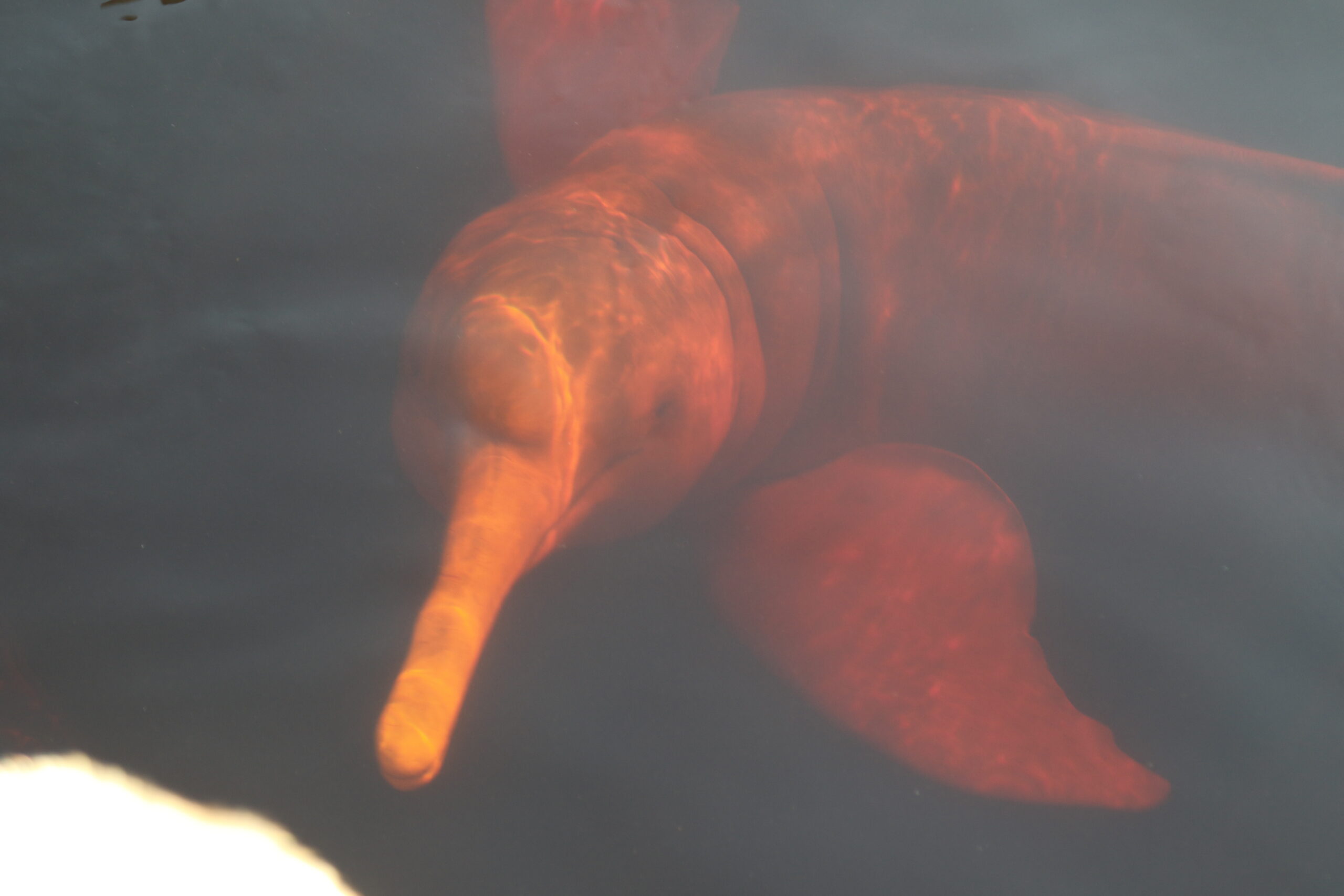
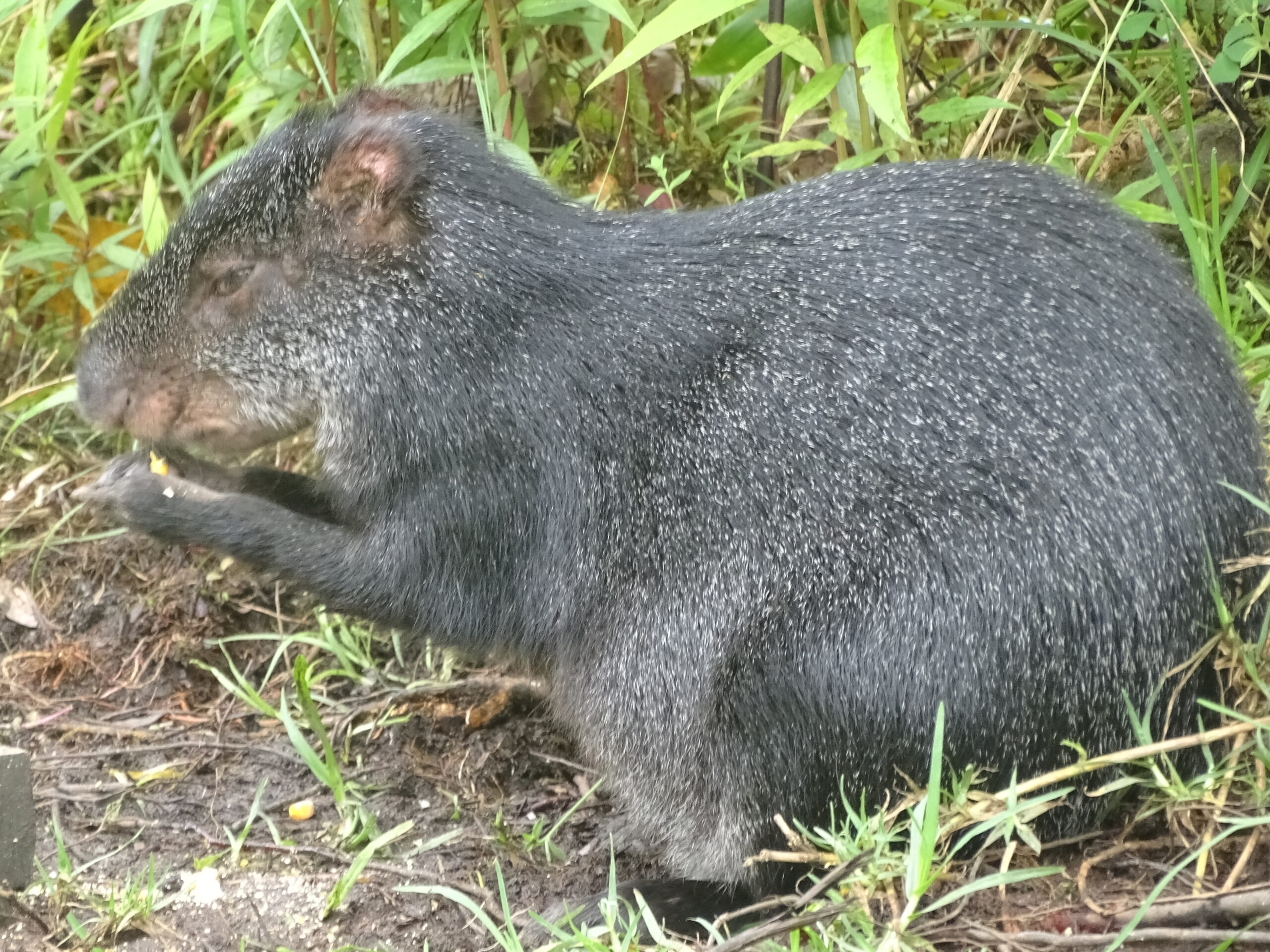
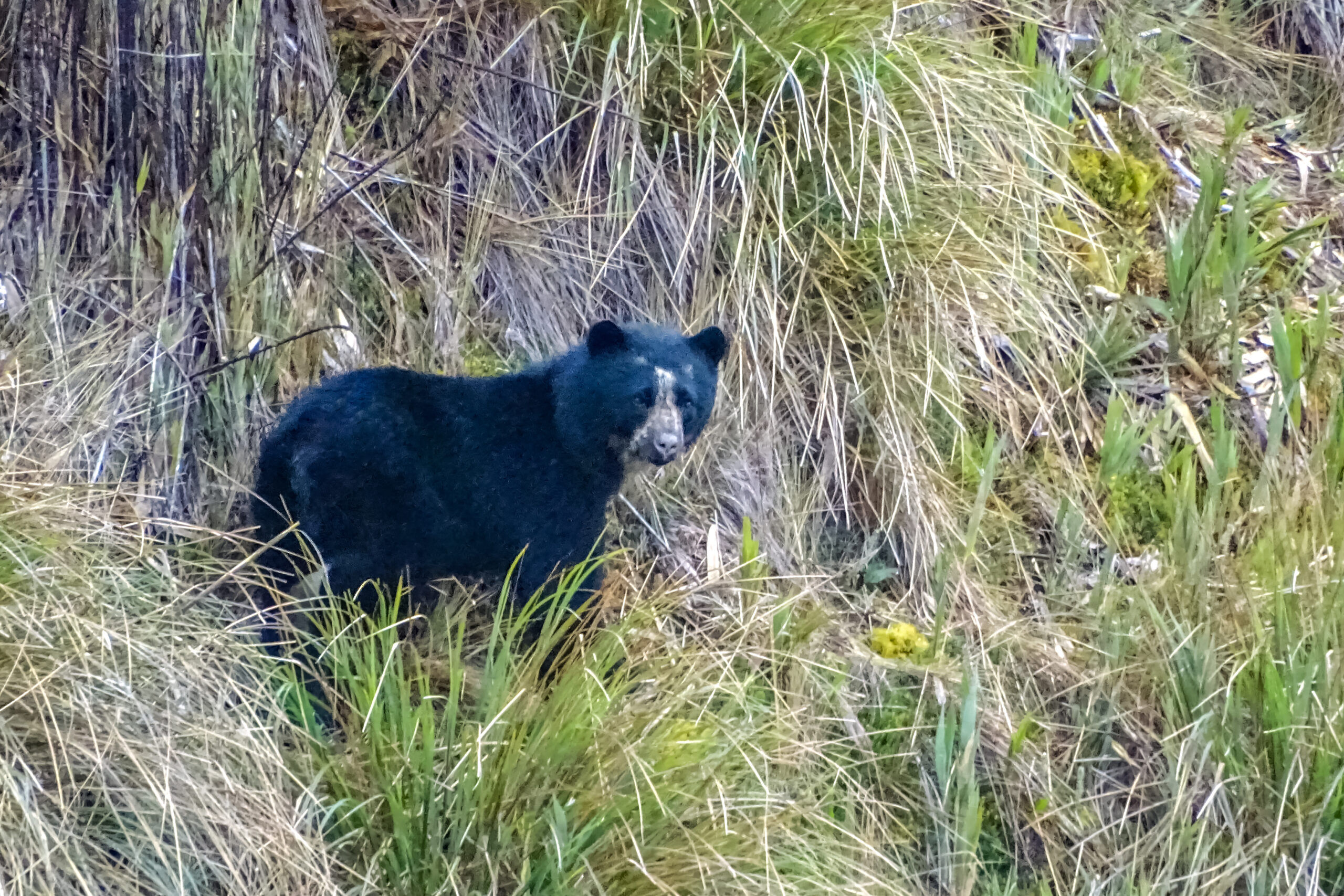
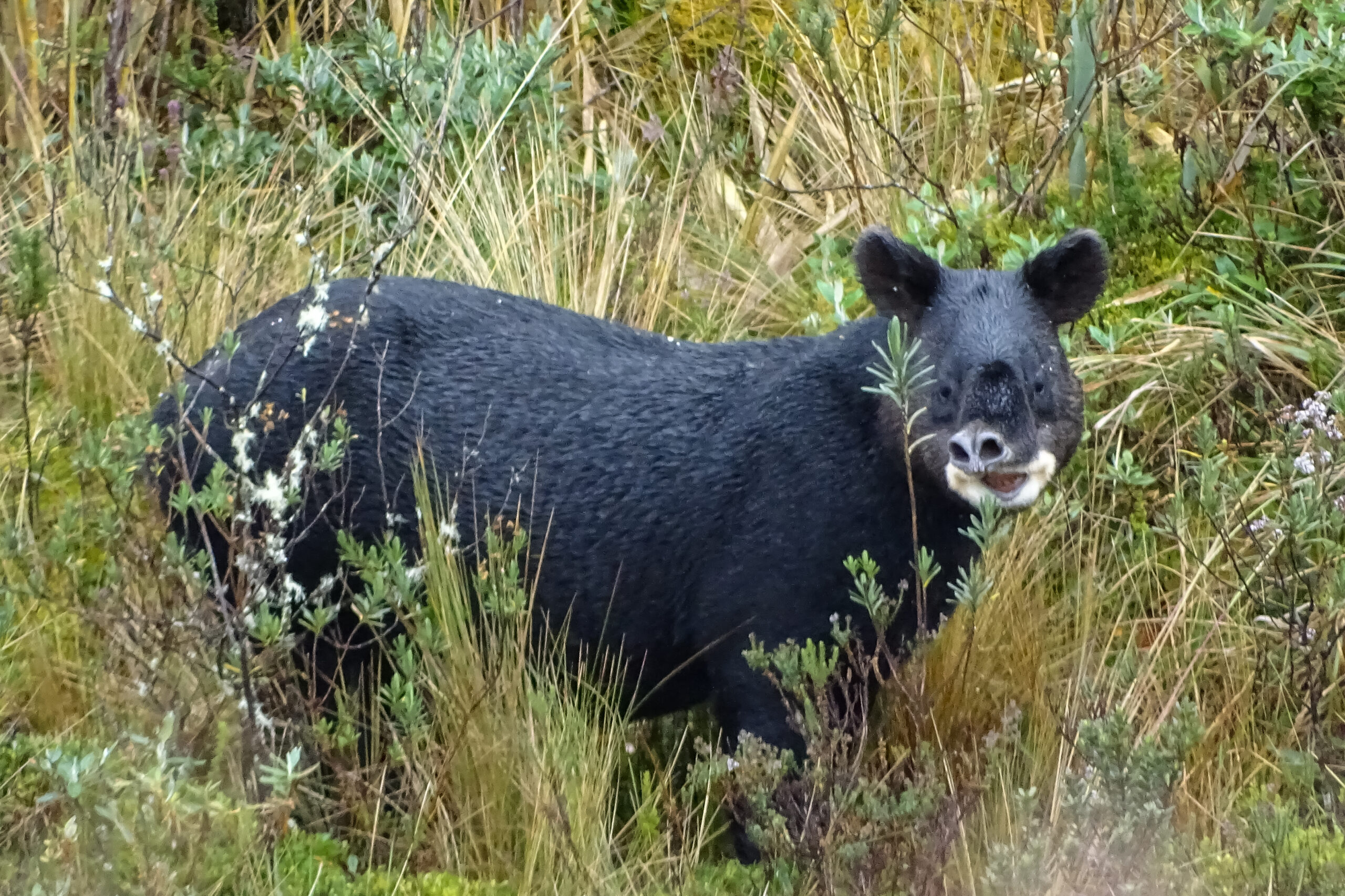

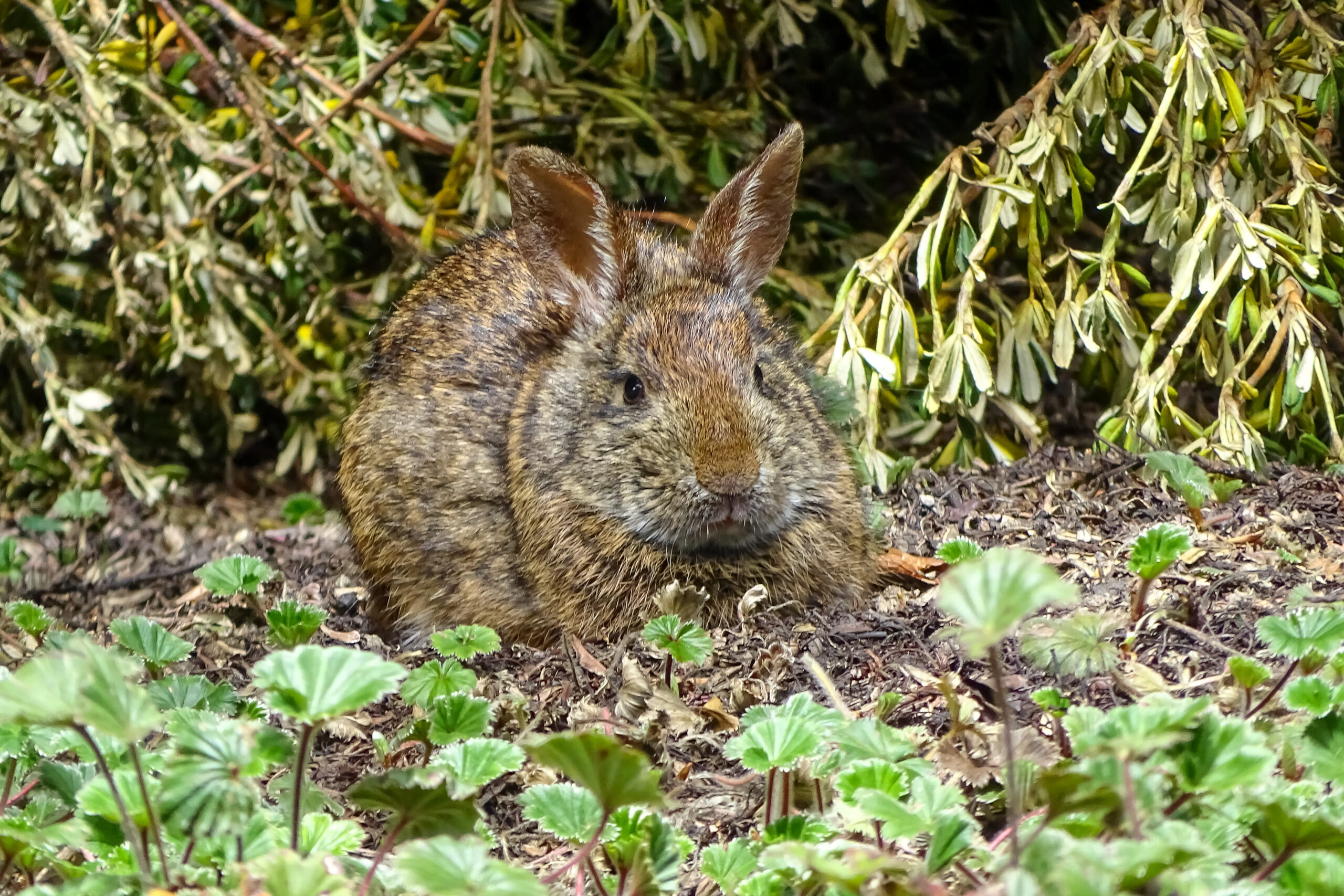
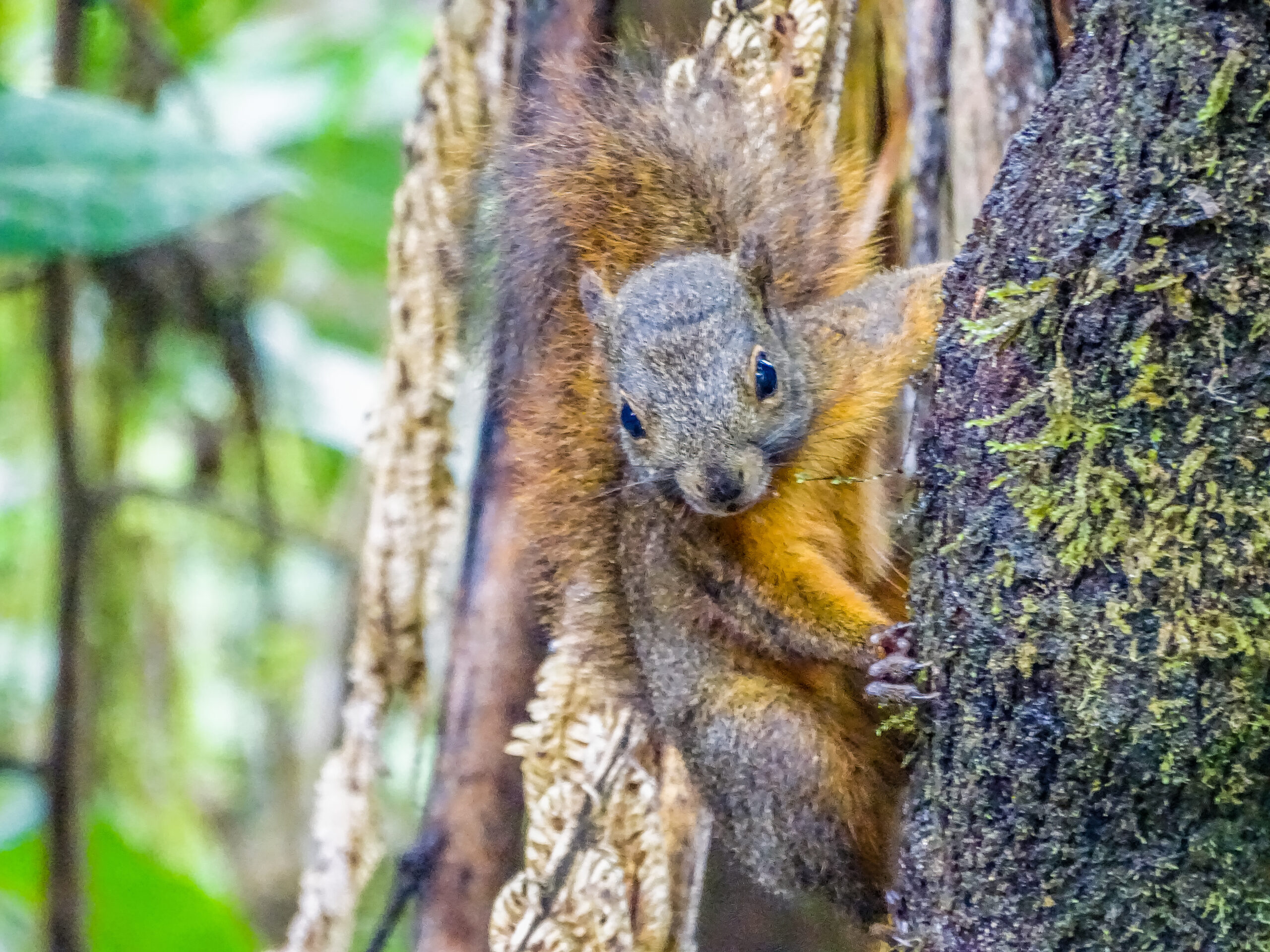
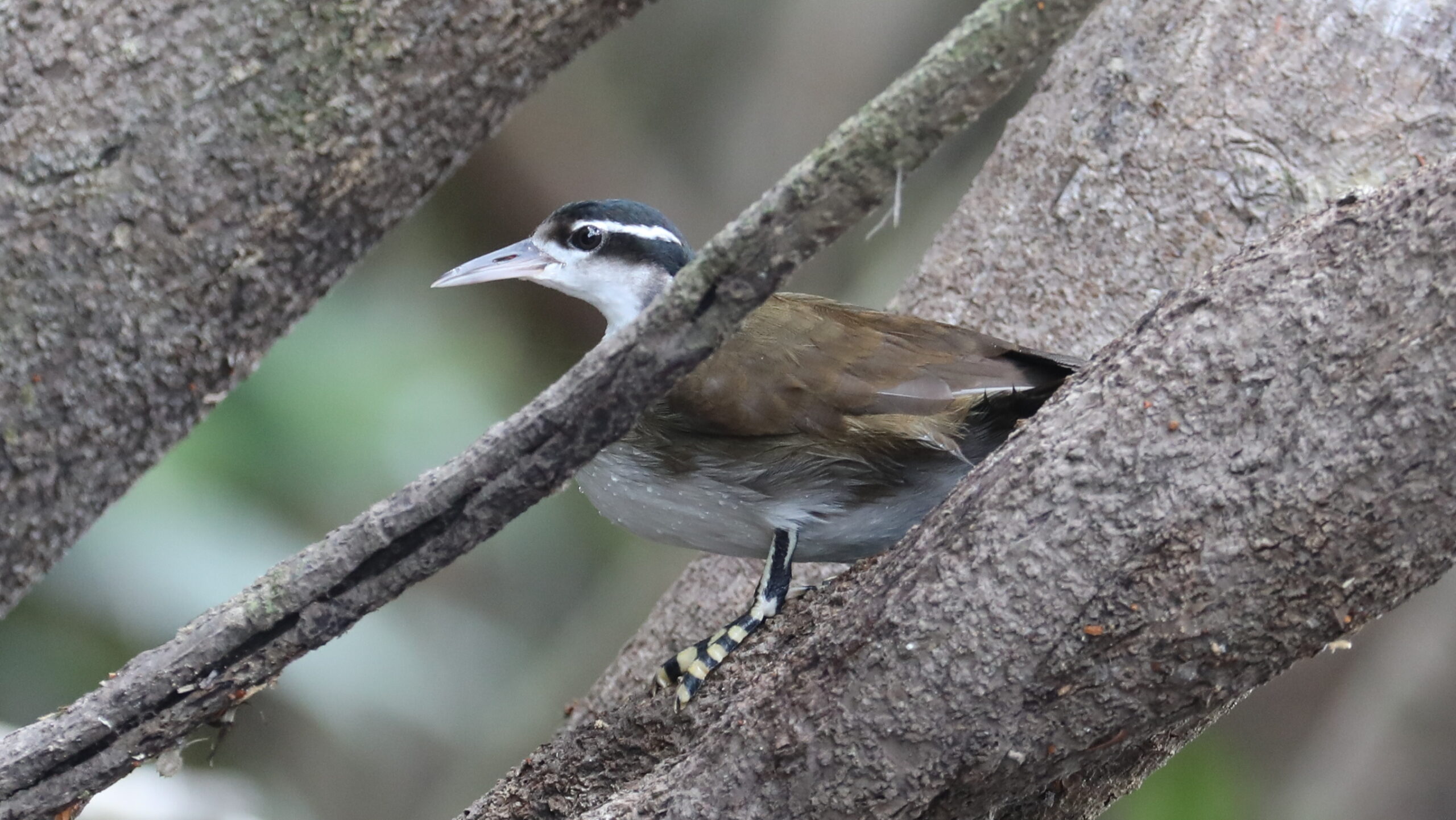
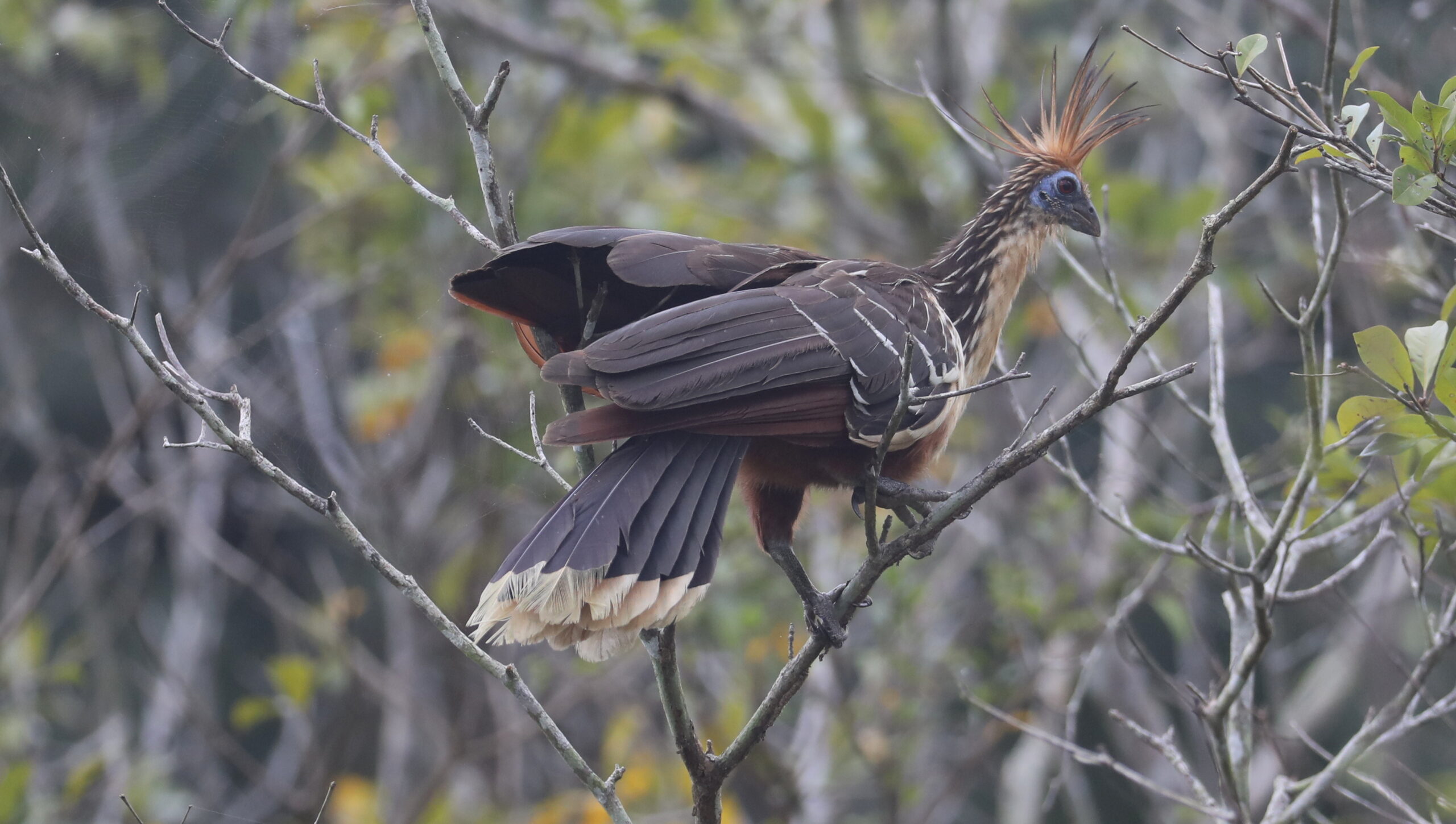
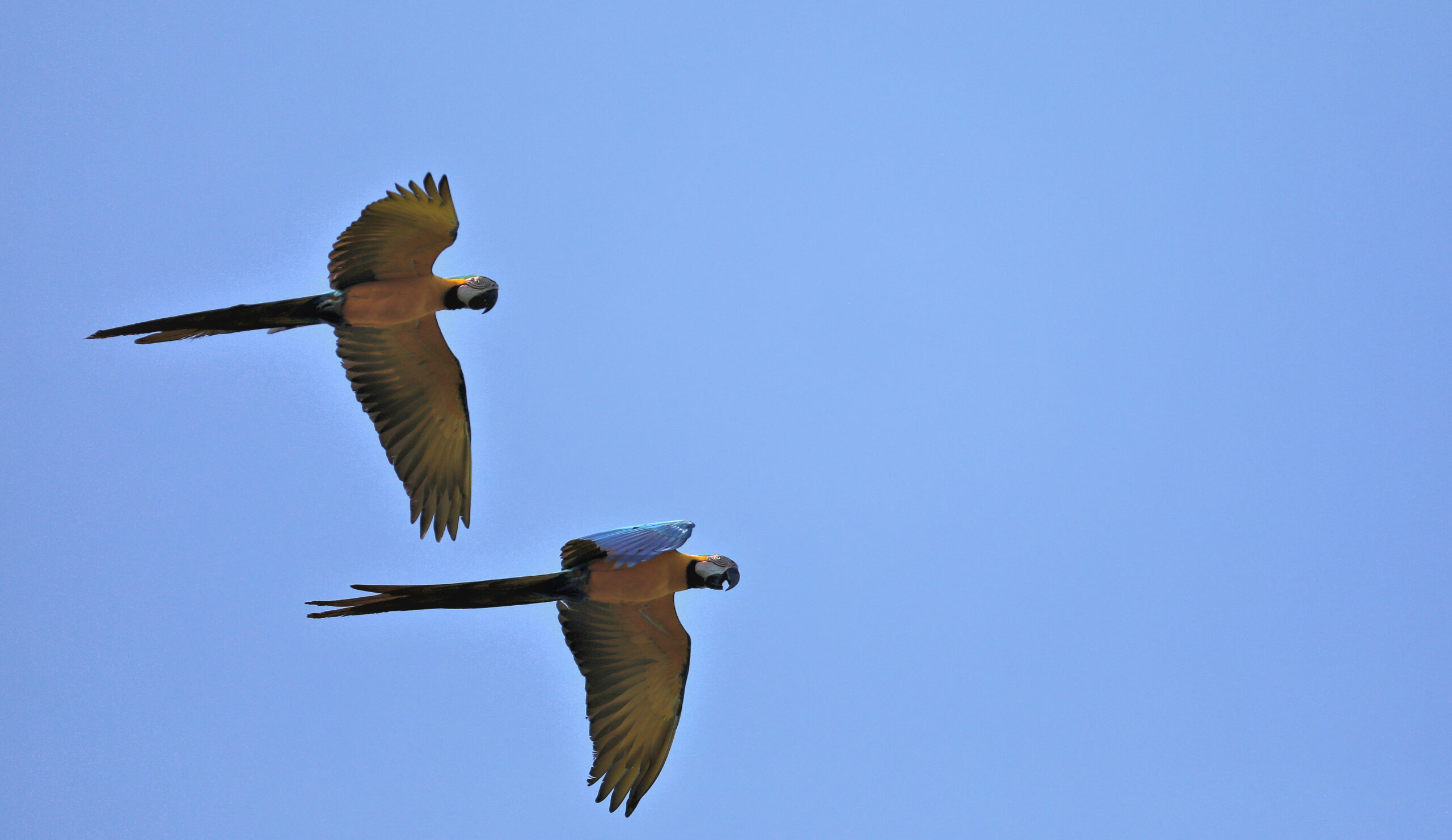

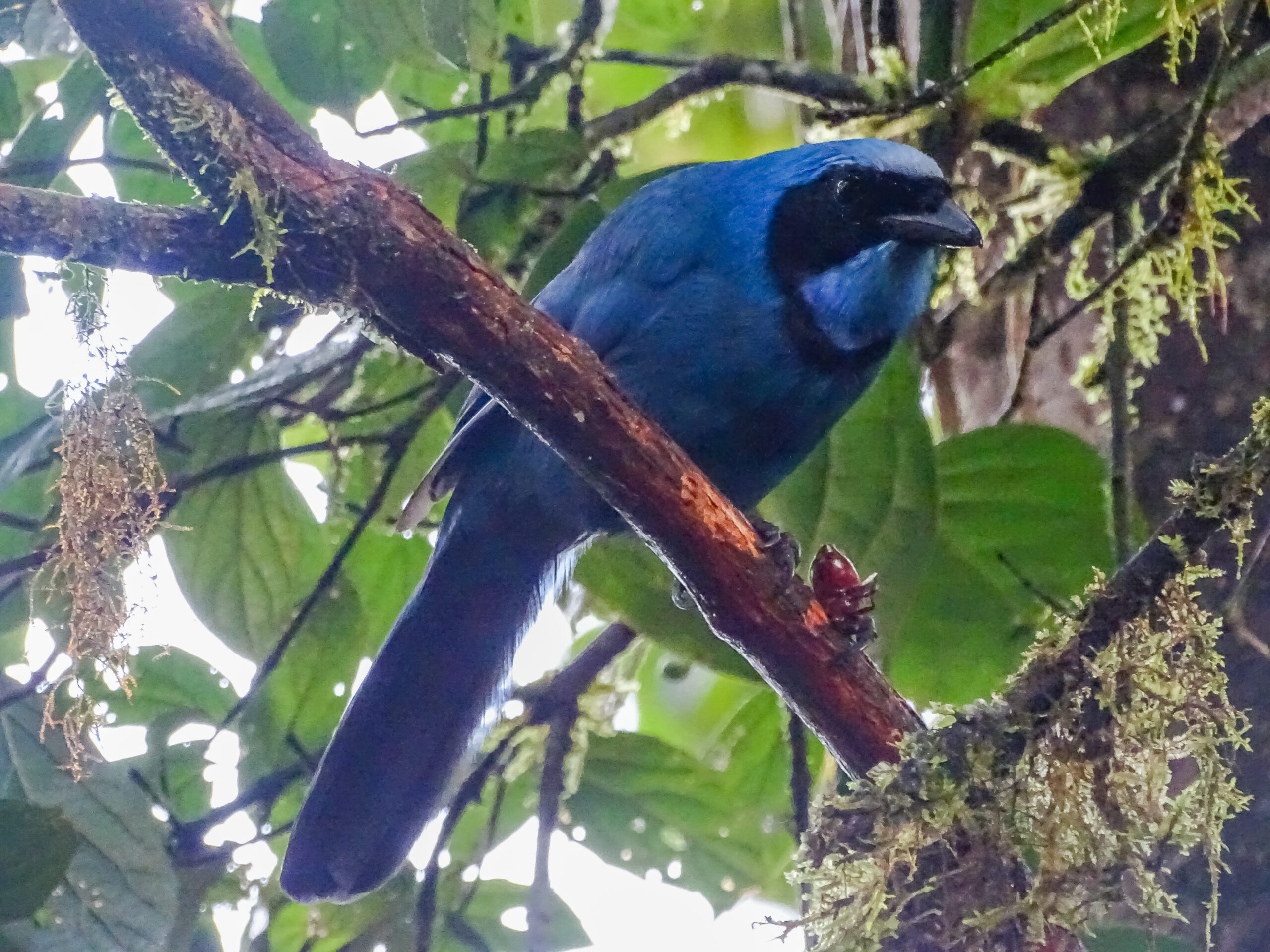













Ask About This Tour
If you have any questions about this tour, please enter your details here and we will get back to you as soon as possible.
Alternatively, contact us by email or phone. We look forward to hearing from you!
- 0117 965 8333
- [email protected]
Or complete the contact form and we will endeavour to get back to you as soon as possible.
* = required field
